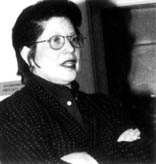
Suzanne Anker
Suzanne Anker is a visual artist (see www.geneculture.org) and theorist working with the iconography of genetics and its biotechnological applications. In 1994, she curated the first exhibition devoted exclusively to the intersection of art and genetics, Gene Culture: Molecular Metaphor in Visual Art, at Fordham University in NYC. She is a guest curator at the New York Academy of Sciences, where she has organized exhibitions such as From Code to Commodity: Genetics and Visual Art and Reprotech: Building Better Babies? She has hosted and participated in numerous panel discussions such as Monkey Business: Art and Science at the Millennium., Sugar Daddy: The Genetics of Oedipus, as well as The New Grotesque, co-hosted with the Museum of Modern Art in NYC. Her book, The Molecular Gaze: Art in the Genetic Age, co-authored with the late Dorothy Nelkin, was published in 2004 by Cold Spring Harbor Laboratory Press. She currently teaches art history and theory at the School of Visual Arts in NYC, where she is Chair of the Art History Department and editor of ArtLab23, its on-line journal (see http://www.artlab23.net). In addition, she currently is host of the Bio-Blurb Show on WPS1Art Radio, where discussions of “sci-art” are broadcast and archived (see www.wps1.org)
Reprotech: Building Better Babies ?
From conception taking place in test-tubes, to nuclear transfers in petri dishes, to embryos that have been cryogenically stored like so much frozen food – high-tech ways and means are expanding far beyond the old carnal way of making babies. When posed with the classic quandary (where do babies come from?), will the mythology of life’s creation soon also include glassware and the bio-lab? Has the bundle-carrying stork been exiled from fairy-tales?
With the bio-printing of replacement organs and tissues on the research horizon, at what cost is this quest for immortality? What social consequences are in store when wombs can be rented through surrogacy contracts and children become the genetic product of three parents? When virgins can give birth and corpses can be fathers, what’s next? This talk will examine contemporary art practice as it relates to concerns generated by current reproductive
technologies.